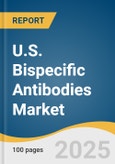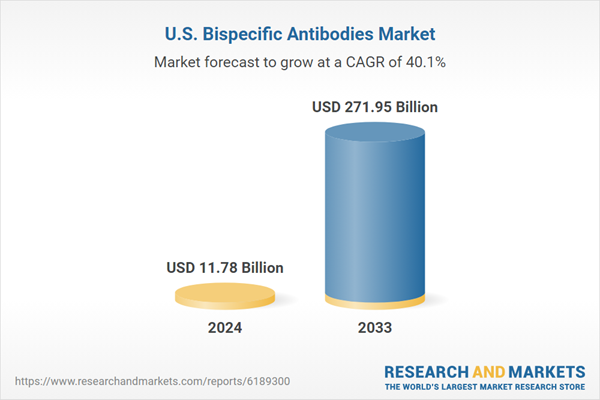A Nature Reviews Clinical Oncology article (2024) states that over 200 bispecific antibodies are in preclinical or clinical development. Most of these antibodies are designed as immune-cell engagers targeting two antigens, highlighting their potential for precision oncology through dual-target mechanisms.
Furthermore, the rising approval by the U.S. Food and Drug Administration for various bispecific antibodies contributes to the growth of investment in research and development activities. For instance, in May 2025, Pfizer entered a high-value licensing agreement with 3SBio for SSGJ 707, including a USD1.25 billion upfront payment and up to USD 4.8 billion in milestone-based payouts. Similarly, in June 2025, Bristol Myers Squibb partnered with BioNTech in a deal worth up to USD 11.1 billion for the co-development and co-commercialization of BioNTech’s investigational bispecific antibody BNT327 for various solid tumor types, comprising USD 1.5 billion upfront, USD 2 billion in guaranteed payments, and as much as USD 7.6 billion in additional development, regulatory, and commercial milestones.
In the U.S., bispecific antibodies are becoming increasingly popular due to the rising number of cancer cases nationwide. A 2024 study published by the American Society of Hematology reported on 564 patients with relapsed or refractory multiple myeloma. Out of these patients, 202 were treated with bispecific antibodies, including teclistamab (91%), talquetamab (14%), and elranatamab (3%). The adoption of these treatments grew dramatically, from just one patient treated in 2022 to 45% of eligible patients in 2023 and reached 54% by mid-2024. This swift adoption corresponds with the FDA approvals of teclistamab in October 2022 and elranatamab in August 2023.
U.S. Bispecific Antibodies Market Report Segmentation
This report forecasts revenue growth at the country level and provides an analysis of the latest industry trends in each of the sub-segments from 2021 to 2033. For this study, the analyst has segmented the U.S. bispecific antibodies market report based on type:Type Outlook (Revenue, USD Million, 2021-2033)
- Inflammatory & Autoimmune Disorders
- Cancer
- Others
Why You Should Buy This Report
- Comprehensive Market Analysis: Gain detailed insights into the market across major regions and segments.
- Competitive Landscape: Explore the market presence of key players.
- Future Trends: Discover the pivotal trends and drivers shaping the future of the market.
- Actionable Recommendations: Utilize insights to uncover new revenue streams and guide strategic business decisions.
Report Deliverables
- Market intelligence to enable effective decision-making
- Market estimates and forecasts from 2018 to 2030
- Growth opportunities and trend analyses
- Segment and regional revenue forecasts for market assessment
- Competition strategy and market share analysis
- Product innovation listings for you to stay ahead of the curve
This product will be delivered within 2 business days.
Table of Contents
Companies Mentioned
The companies profiled in this U.S. Bispecific Antibodies market report include:- Amgen
- Roche
- Genentech
- Janssen
- Immunocore
Table Information
| Report Attribute | Details |
|---|---|
| No. of Pages | 100 |
| Published | October 2025 |
| Forecast Period | 2024 - 2033 |
| Estimated Market Value ( USD | $ 11.78 Billion |
| Forecasted Market Value ( USD | $ 271.95 Billion |
| Compound Annual Growth Rate | 40.1% |
| Regions Covered | United States |
| No. of Companies Mentioned | 6 |









